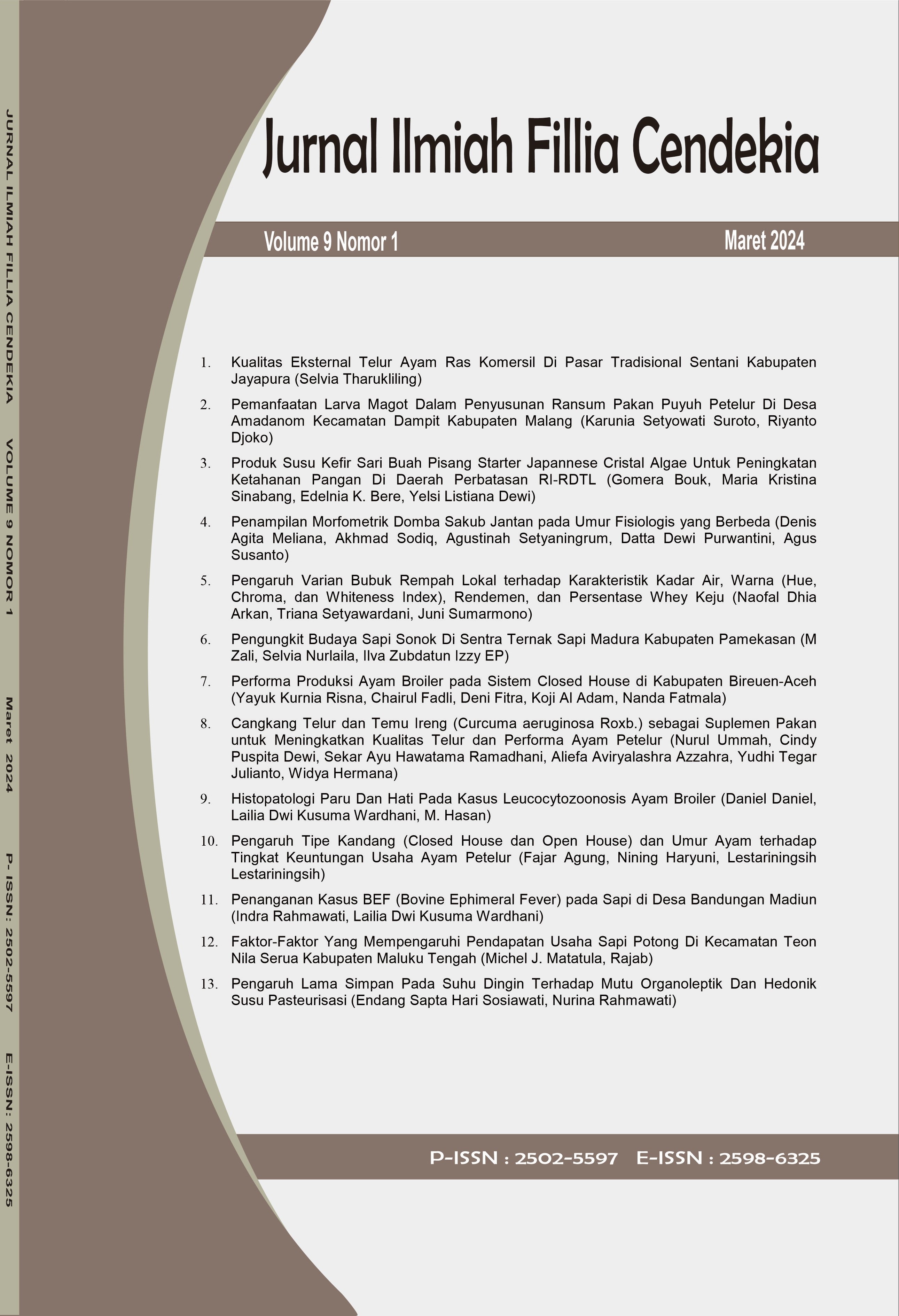Pemanfaatan Larva Magot Dalam Penyusunan Ransum Pakan Puyuh Petelur Di Desa Amadanom Kecamatan Dampit Kabupaten Malang
Abstract
Quail farming is a promising micro business with affordable start-up capital and small land area. Quail eggs have high health value and culinary potential. Quail meat is nutritious, their droppings can be used as fertilizer, and their feathers can be made into crafts. Quail can produce up to 300 eggs per year. However, the COVID-19 pandemic and rising feed prices have made it difficult for many farmers. Maggot larvae from the black soldier fly are an economical feed alternative. This study aims to utilize maggot larvae as an economical feed source for laying quail. This research is entitled "Utilization of Maggot Larvae in the Preparation of Feed Ration for Laying Quail in Amadanom Village, Malang District." The focus of the research was to determine the optimal amount of maggot larvae as a partial replacement for manufactured feed and to evaluate the performance of laying quail receiving alternative feed. The results showed that maggot larvae have a high protein and fat content. Partial replacement of manufactured feed with maggot larvae did not affect feed consumption, egg production or daily productivity of laying quails. This indicates that maggot larvae can be an economical source of feed without compromising production. These results support the use of maggot larvae as an alternative to cope with rising feed prices and improve production efficiency of laying quail. This research provides an economical solution to maintain the layer quail farming business amidst the existing economic challenges.
References
Anonim. (2020). Cara Beternak Burung Puyuh Petelur Dan Pedaging, Pakan, Kandang, Analisa.
Djoko, R., & Fitasari, E. (2017). Studi Teknologi Pakan Pada Usaha Ternak Puyuh Petelur. JAPI, 2(1). https://doi.org/https://doi.org/10.33366/japi.v2i1.613
Hanifah, F. N., Soepranianondo, K., Arif, A., & Al, Lokapirnasari, W. P. (2019). Performa Produksi dan Analisis Usaha Puyuh (Coturnix coturnix japonica) yang Diberi Substitusi Black Soldier Fly Larvae (BSFL) pada Pakan Komersil. J. Sain Veteriner, 37(219–226). https://doi.org/DOI:10.22146/jsv.49067
Hopley, D. (2015). The evaluation of the potential of Tenebrio molitor, Zophobas morio, Naophoeta cinerea, Blaptica dubia, Gromphardhina portentosa, Periplaneta americana, Blatta lateralis, Oxyhalao duesta and Hermetia illucens for use in poultry feeds. MSc Diss.
Raharjo, S., Rahayu, E., & Purnomo, S. H. (2018). Analisis Keuntungan Usaha Beternak Puyuh di Kecamatan Kokap Kabupaten Kulonprogo. UNS.
YA Tribudi, A Tohardi, & Y Rohayeti. (2020). Pemanfaatan Jeringau Merah (Acorus Sp) Sebagai Pengganti Antibiotika Terhadap Performa Ayam Broiler Yang Diinfeksi Salmonella typhimurium. Majalah Ilmiah Peternakan, 23(2), 51–55.

This work is licensed under a Creative Commons Attribution-ShareAlike 4.0 International License.










